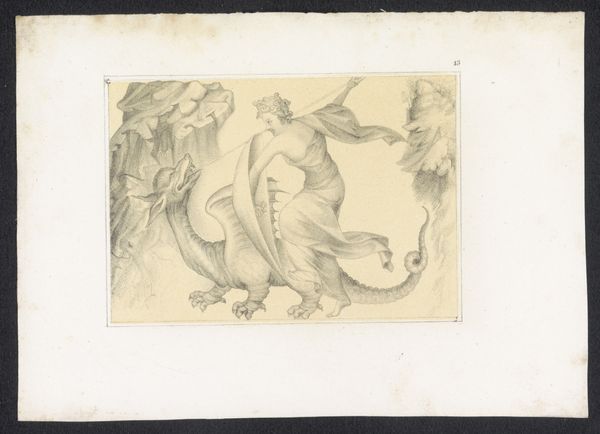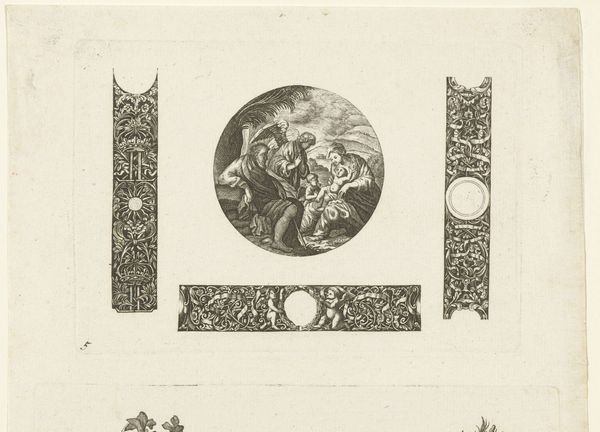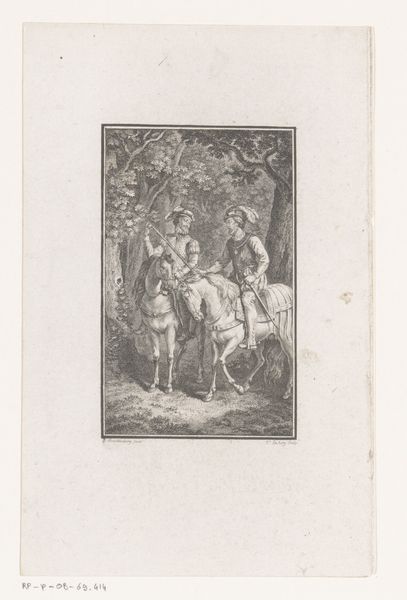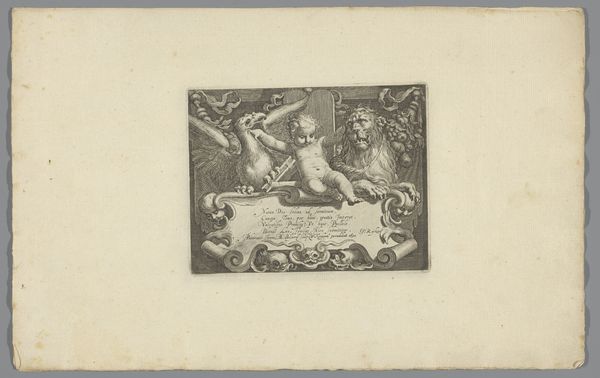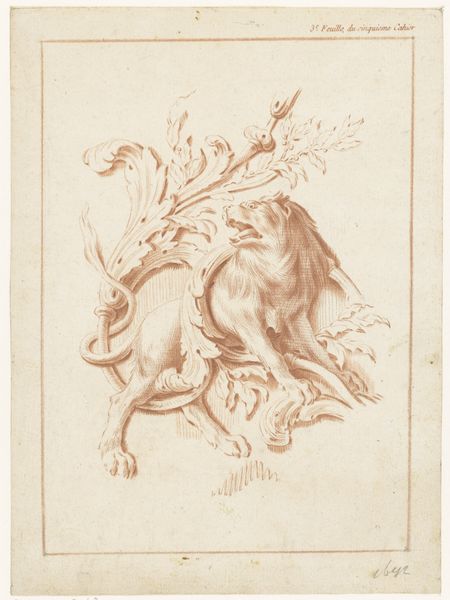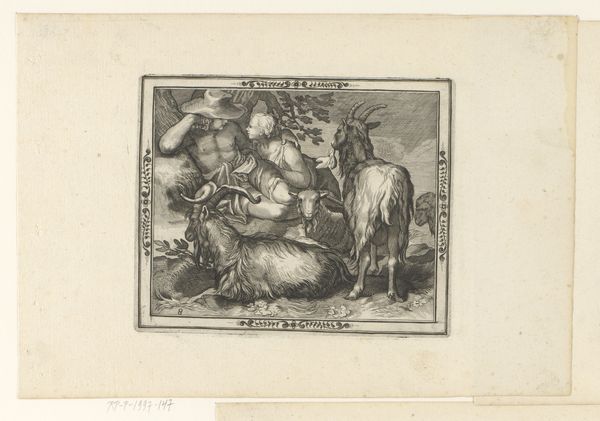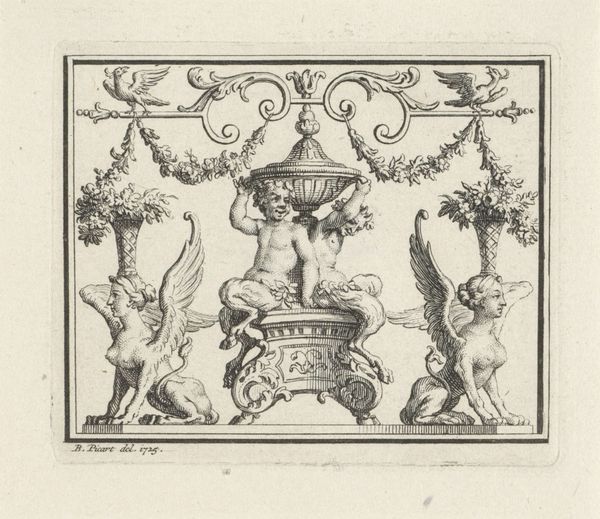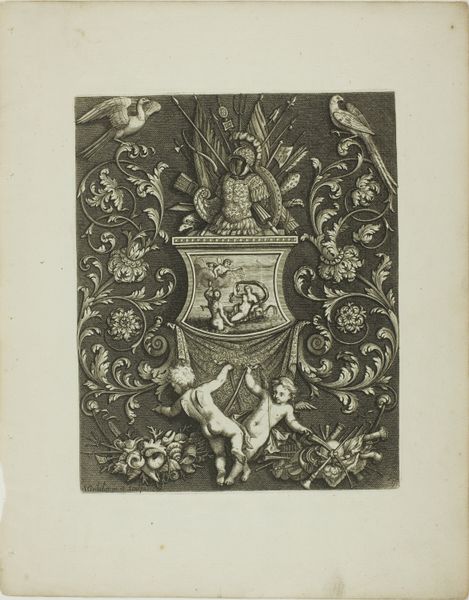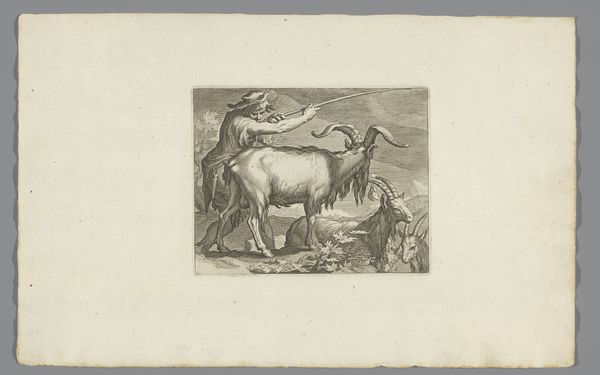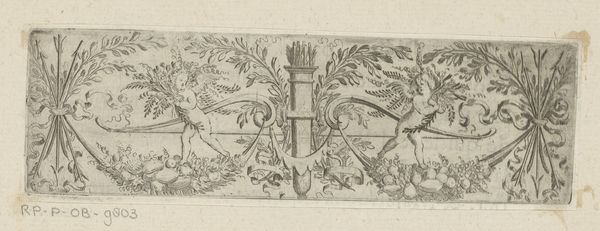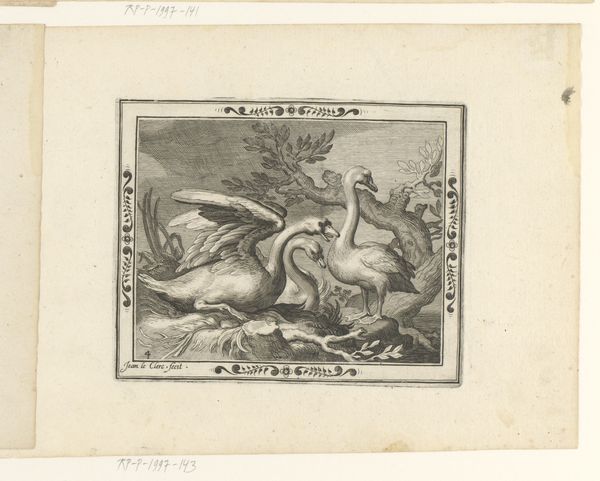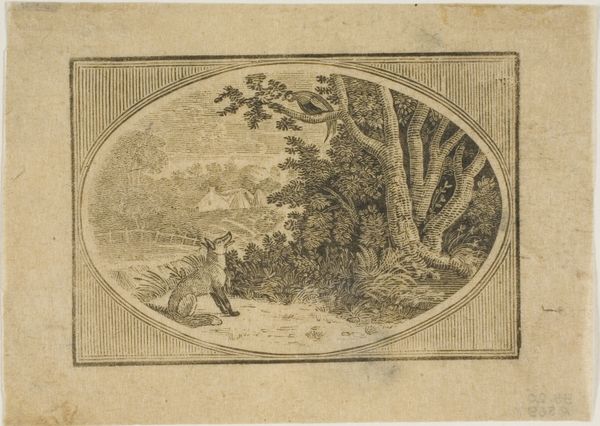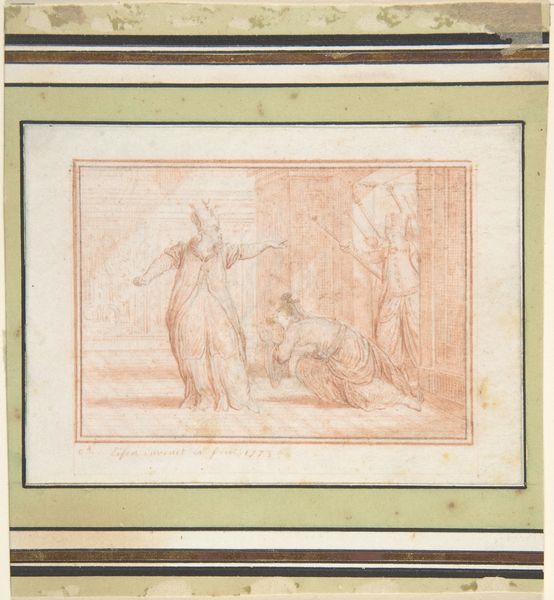
Dimensions: height 141 mm, width 104 mm
Copyright: Rijks Museum: Open Domain
Editor: So this print, "Satyr and Goat," by Nicolas Xavier Willemin, was made sometime between 1775 and 1797. It has a strange elegance; I am really curious to know, what are some of the key elements that shape our understanding of this image? Curator: Look at the framing of the central image – how the ornamental borders echo the wildness within, taming it, almost ironically. Have you noticed how those stylized creatures contrast with the central figures? It points to a dialogue between the controlled, civilized world, represented by those precise motifs, and the untamed, primal world embodied by the satyr and goat. Consider the deep-seated symbolism of the satyr, a creature linked with unrestrained urges, confronting the goat, another ancient symbol, often associated with vitality and stubbornness. What sort of emotional landscape does this suggest? Editor: It feels like there’s a tension between order and chaos, tradition and…animalistic instinct? I hadn’t noticed that juxtaposition so strongly. What could Willemin be saying about humanity? Curator: Precisely! The print reflects broader cultural anxieties of the time. The Age of Enlightenment grappled with humanity's dual nature - reason versus passion. Perhaps this work speaks to our ongoing internal battle: are we governed by intellect or base desires? These symbolic animals were culturally potent images; how does understanding the context affect your interpretation? Editor: I guess I saw it as a simpler scene, a mythical creature encountering an animal, but knowing more about what they symbolize unlocks a much deeper conversation. The context really matters! Curator: Indeed. Images are never neutral. They're charged with cultural memory. They remind us that every picture, like every myth, carries echoes of who we were, who we are, and who we might become. Editor: Thanks, it makes me want to dig deeper into the symbolism present in other works we will explore today!
Comments
No comments
Be the first to comment and join the conversation on the ultimate creative platform.
